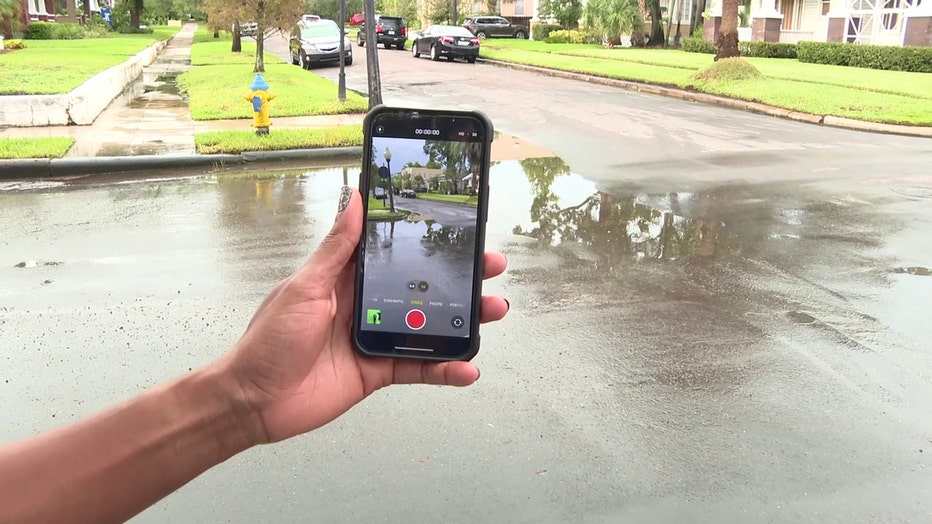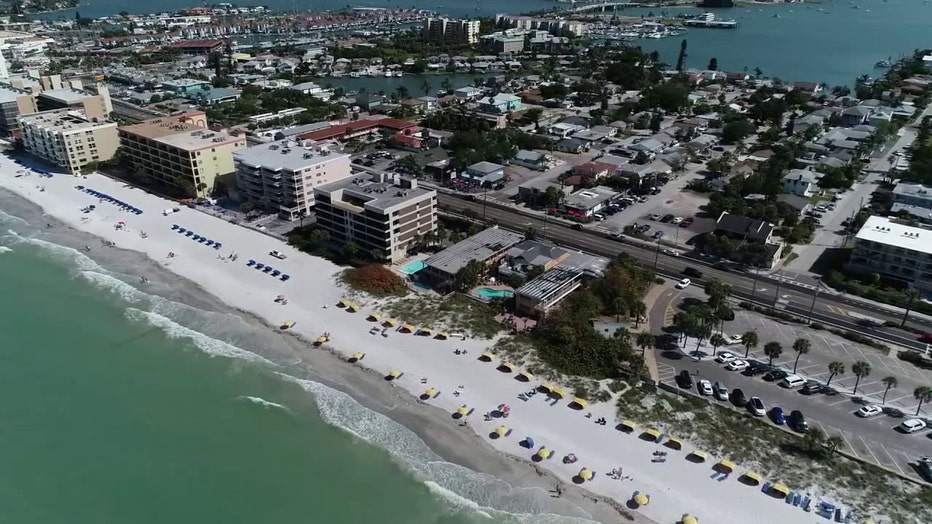Researchers developing app to help emergency responders identify climate risk areas in Pinellas County
Climate app helps chart flooding
USF researchers are using resident’s videos and photos of flooding in Pinellas County neighborhoods to assess climate risk. Briona Arradondo reports.
ST. PETERSBURG, Fla. - A crowdsourcing tool using videos and photos from neighbors is the base for a new app that aims to help emergency responders identify more areas with climate risks in Pinellas County.
The University of South Florida St. Pete was awarded a $1.5 million grant from the National Science Foundation. Professor Barnali Dixon will head up the development of the app, which uses crowdsourcing from an existing tool called "CRIS" or Community Resiliency Information Systems to create the "CRIS-HAZARD" app.

"If your backyard gets flooded, how are they going to know?" said Dixon, who is also the executive director of Initiative on Coastal Adaptation and Resilience (ICAR) at USF St. Pete. "We are always having a one size fits all policy, but each [of the] communities are unique. Their neighborhoods and their needs are unique."
READ: Can you tell is someone is lying? St. Pete company develops AI tool to detect deception
Dixon said people who live in Pinellas County will be able to upload any photos and videos they take in real-time of flooding and storm surge during severe storms directly into the app, which will go out to the hands of emergency management.

Pinellas County Emergency Management officials said they look forward to working with USF St. Pete on the new app. The county is currently doing flood risk assessments through the flood mitigation action plan and in phase two of the sea level rise and storm surge vulnerability assessment, according to a Pinellas EMA spokesperson.
Officials said the county will focus on five primary watersheds, like the Anclote River, Curlew Creek, McKay Creek, Joe’s Creek and Southern Barrier Islands.

"What we are doing now, we are giving the powers to the community to upload their information more to photographic recording of their what is going on in their backyard," said Dixon.
MORE: $1 billion proposed Port Tampa Bay dredging project sparks environmental concerns
The app won’t just be for flooding and storm surge, but it can help those with socio-economic needs like snap recipients and the elderly, Dixon added. She said part of the app will include those features, so emergency responders will know where the hidden needs are.
Dixon said USF St. Pete researchers will hold town meetings to work with Pinellas County coastal neighborhoods, beginning October 14.

